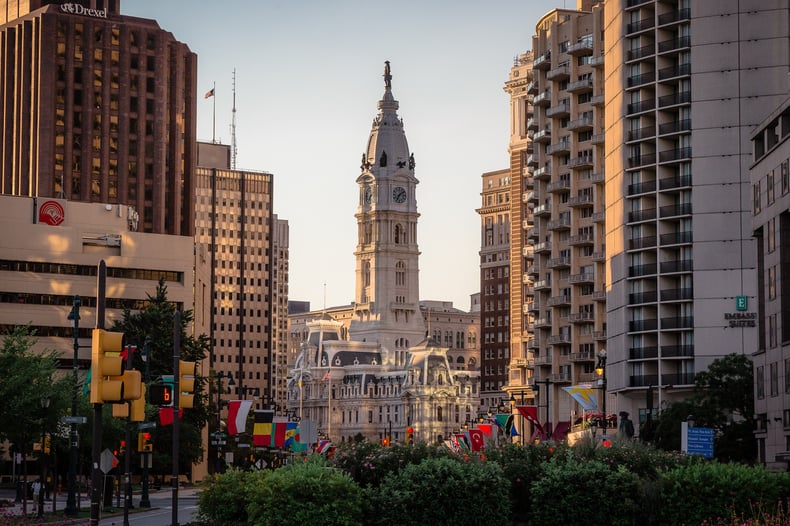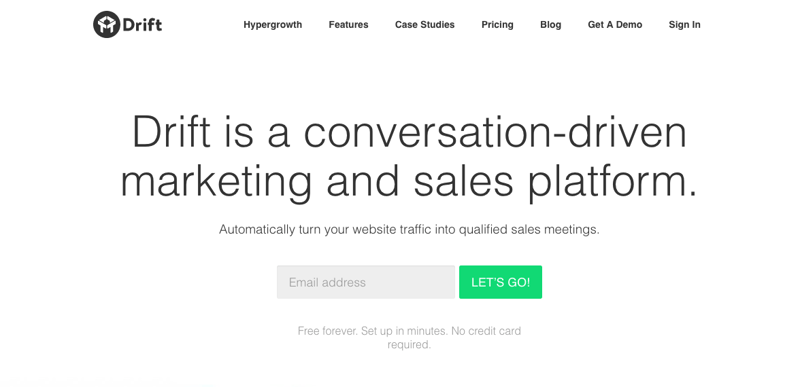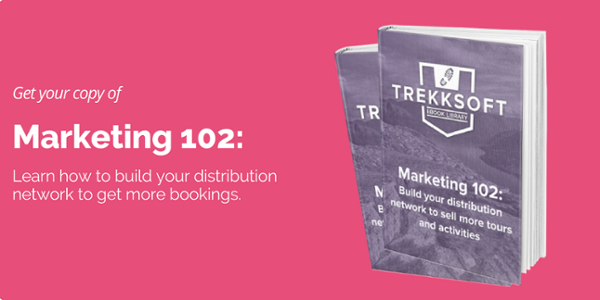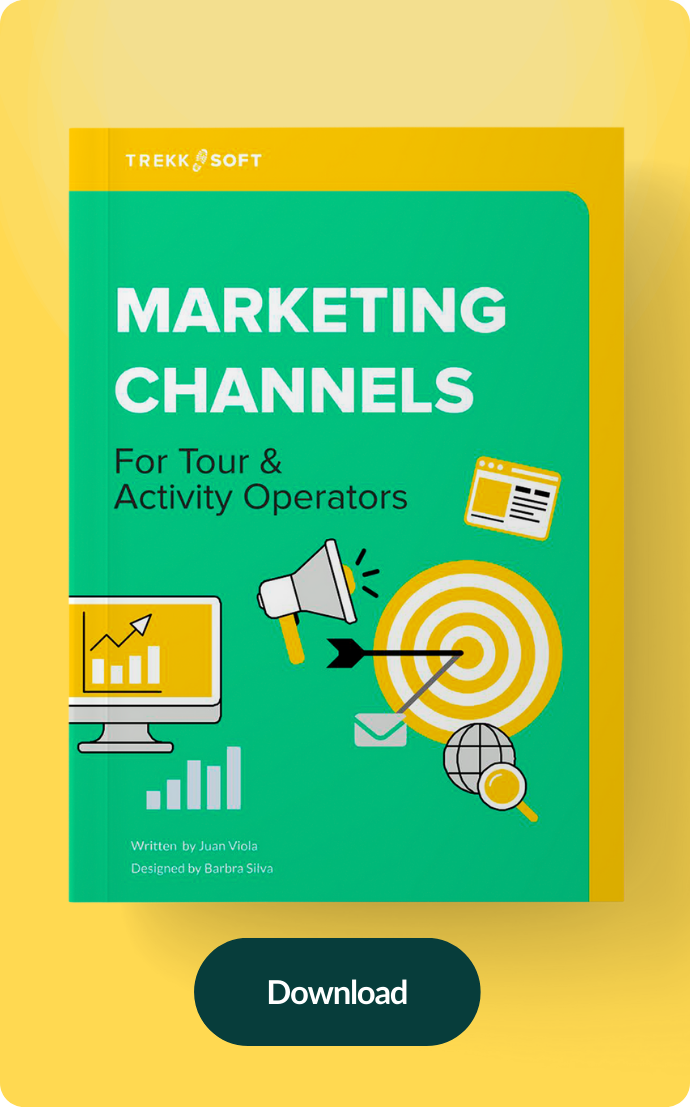This post was originally published in 2017 and has been updated in August 2021 for relevance.
Every successful business needs to know how to sell its offers effectively. Great marketers know the systems and tools out there to help, but as a tour or activity provider, you may not be as masterful when it comes to marketing.
Not to worry, we've taken the time to put together everything you need to know about building one of the most important systems for any business – a marketing funnel.
Today we'll show you why you need one and some tips about how to craft the ideal marketing funnel for your tourism business. Once you've got this system in place, it will make managing your campaigns easier as you work towards desired results.
What we cover:
1. What is a marketing funnel?
4. How do you measure your results?
What is a marketing funnel?
A marketing funnel (sometimes called a sales or purchasing funnel) is a system you can use to track the stages of consumers. It follows the journey from a consumer's early awareness of a product or service into when they want to become a customer.
Some even go as far as following return customers and devoted brand evangelists, but for the sake of this conversation, we're going to look at the original model (it was created in 1898, you know!)
A marketing funnel can look different for each business, but they all follow the same basic structure: the four stages. In the industry, these are usually broken down using an acronym called AIDA:
.png?width=499&name=Sales%20Funnel%20(AIDA).png)
Design by Martin Zhel
As you can see here, it gets its name because it resembles a funnel. In the first stage (awareness) you will always have a much larger audience than you do in the final one (action). The top of the funnel is where you grab attention of consumers. Many of the people in the awareness stage aren't necessarily interested in the offer, but it caught their attention anyway. The bottom of the funnel is where your customer base lives, these are who you've probably been spending most of your time focusing on so far.
Why is it important?
The funnel is a way to measure something that is otherwise pretty much unknowable – your customers' wants, what drives them to purchase with you, and at which point they arrive at the decision to take action.
Ultimately, the funnel shows you where you're gaining the most customers and where you might be losing them in your marketing efforts. By researching with this method, you can see which stages you're successful in and which ones could use a little more work.
Who is it for?
As a business owner, it's tempting to try to gain as much as you can. In tourism, especially, you have the ability to market your offers to a wide variety of people. But even as a tour operator, you should take time to get to know your main customer base and think about who's really showing up for your offers.
Your ideal customer might not actually be the customer base you've been spending your advertising and marketing budget on. In the same way, what worked 10 years ago might not be as eye-catching today. Let's explore these ideas through a DMC.

Visit Philadelphia's 20-year marketing success story
Philadelphia, Pennsylvania is a fine example of a destination brand that knew when to rethink their marketing strategy. In 1996, Meryl Levitz founded the leisure marketing group Visit Philadelphia. She has served as CEO and president for the brand ever since. At the time, the city's efforts were outdated and desperately needed some attention.
"One of the things we did when we first did the research [in 1996] was look at how Philadelphia was represented visually. That photography was just dead and awful and video didn’t really play into anything at that time. We’ve had an early and continual interest in video and photography to drive interest and engagement with consumers," said Levitz about her efforts to to rebrand the city.
"For first-time visitors and history buffs, seeing the bell and the hall are at the top of their list. But you can’t rely just on the history because history is very much a day-time word... You have to give visitors the ability to make a whole trip and alert them that there are places to stay, places to eat, activities for children, things for sports fans, and things for art fans."
It seems she was right. 20 years later in 2016, the city broke its record for tourism with 42 million domestic visitors traveling there that year, 20 million visits to their website, 1.3 million social media followers, and more than 200 local partnerships made. Their marketing initiatives brought in approximately $6.8 billion last year, most of it going towards dining and accommodation.
Another notable success to top their 20 successful years, Visit Philadelphia worked to become a finalist in the position of host city for the 2016 Democratic National Convention. After the brand's strategic and fundraising efforts, Philadelphia beat out cities like Columbus, New York City, and Phoenix as the top destination for this momentous political event. This was a huge success, proving that the brand not only knows how to appeal to a new and younger audience, but when to highlight the classic aspects as well.
The Visit Philly team knows exactly who to target and when. It started in 1996 when they realized that most of the tourism-focused efforts were causing the city to remain important to historians but not as many modern travelers.
Levitz knew that somewhere along the way travelers were getting lost in the awareness and interest stages. Without knowing what the city could offer beyond its history, travelers weren't making it into the decision or action stages where they could see for themselves what else the city offers. They realized their ideal customer wasn't only in the demographic they'd marketed to in the past.
Read: A marketing guide for each stage of the travel customer journey
How does the funnel work?
As we've read, creating a funnel takes time. You constantly need to assess who you're creating it for and why. But once you've got an idea, putting it into action is pretty simple. To keep it simple, let's stick to the AIDA acronym mentioned above.
1. Awareness - This is where you catch the traffic. It could be through social media, organic traffic to a blog post, or the in-person engagement that brings in local customers. For Visit Philly, we saw that they took time to make visual aids like photography and video a huge part of their awareness stage, even before other destinations were doing it.
2. Interest - Here's where you dazzle the customers and show them how your offers are going to fit into their life. The important thing to do here is to share relevant information that people can remember. For Philadelphia, a lot of their current efforts are coming from social media campaigns that highlight the fun daily vibes, notable events in the area, and the historic aspects. Here's one from their current social campaign:
3. Decision - Here's where the consumers learn more about what you're bringing to the table. They should see the whole picture, including the cost.
4. Action - This is where you sweeten the deal by adding something extra to the offer. It could be a free service, a discount, or an add-on.
Another company that seems to master their conversion efforts is Drift. They have a strong and lasting effect on their readers because they create very clean content that makes it easy to digest and understand what they need to do.

Let's break down Drift's 4-step funnel. Their tactic looks something like this:
1. Awareness - They do this through blog posts, referrals, affiliate links, and (perhaps most important) organic traffic to their website.
2. Interest - Drift's main hub is their website. They drive people into their homepage and use it to try to convert their traffic into customers with the next step.
3. Decision - They place their offer in a few different places. The first is on their homepage where they have a sign up form right in the center. It's literally the first thing you see, but to double up on the offer, they have another one at the very bottom. From there, you can be drawn to their pricing page, which offers unique and interactive features like a slider where you name your own price for their services.
4. Action - Here is the defining factor for Drift. They've already won people over with their clean designs and clear message, but did you know that Drift offers some of their services for free? Many of their customers start off small with their free services and only then move up to their paid subscriptions.
While Drift's free model concept would likely be impossible for most tour and activity providers, it's a good example of a brand that's willing to let their customers arrive to a decision gradually. For your company, you could easily sweeten the deal for consumers in the decision stage with something like a discount or a free add-on for your first-time customers.
Note: Each business places their focus on different parts of the funnel. For example, the ones focused on the bottom of the funnel tend to care more about trying to engage with their existing customer base than chasing down new leads. They put a larger effort into their re-engagement strategies on social media, through email workflows, and even in offline methods like customer gatherings or phone calls.
An example of a company that might do this would be a long-standing company, one that's been around for more than 20 years. These companies have likely built up repeat business over time that continue to come back and bring in a steady enough base revenue.
However, if these businesses plan to remain successful, they make sure they aren't completely ignoring their top of funnel. The breakdown of their focus might look something like 20% top of funnel, 30% middle of funnel, and 50% bottom of funnel.
Read: 8 add-ons to give away for free to increase the value of your product
Measuring your results
Once you've put in all the work to create your funnel, it's time to look at your results. The best way to measure your results is to know how to look at them. This is why you need to define your key metrics. For a business, a metric is simply the quantifiable way you use to measure what's been effective.
This can be something broad like the number of views on your online channel or specific, like how many return customers you've had each month. Once the metric is defined, it is used to track and assess the current status of a specific business process.
The conversion rate
Regardless of what you want your funnel to focus on, an important metric to think about is the conversion rate. If you're not sure what that is, it's just the percentage of consumers that take the desired action. In the case of a tour operator, you'd measure how many visitors decided to book a tour.
According to the most recent Unbounce Conversion Benchmark Report, the highest conversion rate for the broad Travel sector is 25.1%, while the median rate is closer to 5%. This means that out of the consumers who see your offers, roughly about 5% of them will convert all the way down the funnel and become a customer.
Note: The conversion rate doesn't always have to follow the purchase. You can have one for your social media engagement or even the website traffic that signed up for a newsletter. It is really just about getting the desired action, whatever that looks like for your company's current goals.
Create a dashboard
The best way to do this is create a dashboard that showcases the different things you want to track. At TrekkSoft, we are very happy with HubSpot's tracking tools. They offer a dashboard helps us track specific metrics to hold ourselves accountable to meeting our goals. They also help us determine if some of the goals we've set are unrealistic.
According to President of VisionEdge Marketing Laura Patterson, your marketing dashboard’s core metrics should fit into one of the following categories:
- Whether or not your marketing efforts are effective
- Whether or not you're hitting your targets
- Any improvements that need to be made
- The ROI of your marketing efforts
Some important metrics to include in your own dashboard could be:
-
Website traffic - is it bringing in customers? Where are the customers at in their journey once they visit your site (see more on customer journey below)
-
Time spent to turn into a customer - this is called the customer journey and you might be surprised to learn how long it is for your main customer base.
- Revenue per sale - but remember, this isn't as simple as looking at the average booking price, it should also take into consideration how much you had to spend to get them to purchase in the first place.

It's clear there are a number of ways to build your marketing funnel. It can focus on your company's brand awareness and public image. It could also be built around retaining your past customers. Or, you could stick with the classic and make your funnel all about bringing in leads and converting them into customers.
The most important takeaway is that even though there are plenty of helpful parameters, there is no one-size-fits-all funnel for every business. The best thing to do is to get started and create one for yourself!
Learn creative online marketing strategies with our Marketing 102 ebook:
Header image by Amelia Bartlett on Unsplash




